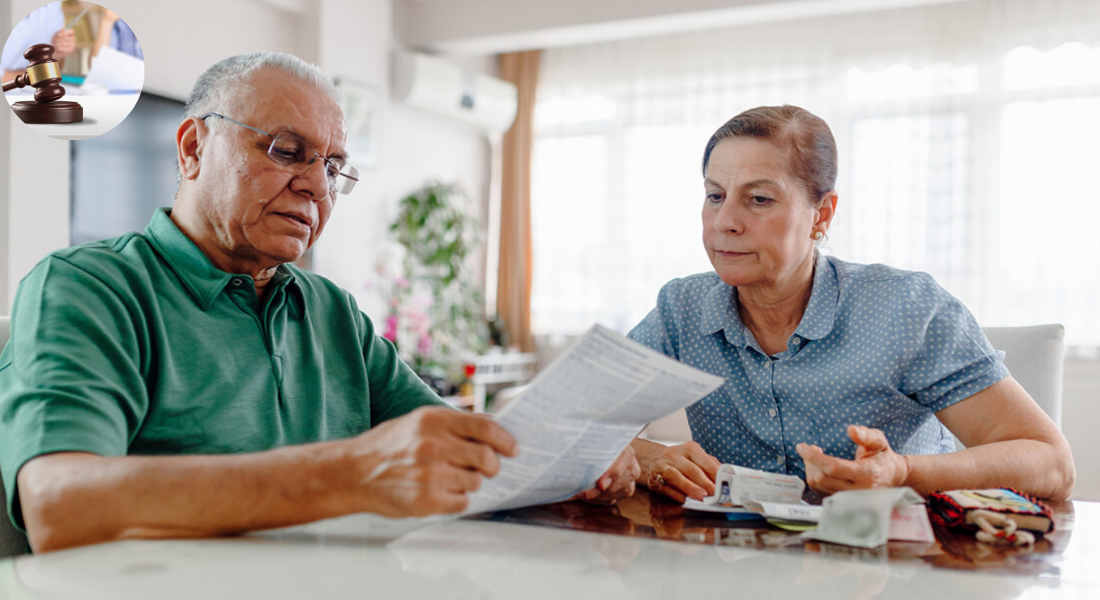Facing bankruptcy in the UK can be a daunting experience, especially when protecting your most valuable asset—your home. Many worry that declaring bankruptcy will automatically result in losing their family home, but the reality is more nuanced. The process and the impact on your property depend on several factors, such as how your home is owned, who you live with, and the amount of equity available after any secured debts like a mortgage are considered. Understanding your legal rights and the options available can help you make informed decisions to safeguard your home and provide stability for your family during this challenging time.
Understanding Bankruptcy in the UK
Bankruptcy in the UK is a legal process designed to help individuals who can no longer manage their debts. It provides a fresh start by discharging most unsecured debts after a specific period.
When you file for bankruptcy, an official receiver will be appointed to oversee your case. They assess your financial situation, including income and assets. This ensures fair treatment of creditors while giving you relief from overwhelming obligations.
The bankruptcy typically lasts one year, but its effects can linger on your credit report for up to six years. During this time, certain restrictions apply—like not being able to act as a director of a company or obtaining credit without disclosure.
Understanding these nuances is essential as you navigate the implications of bankruptcy and how it may affect different aspects of your life, especially homeownership.
The Impact of Bankruptcy on Your Home
Filing for bankruptcy can significantly affect your home. Many worry about losing their property, especially if they have a mortgage.
When you declare bankruptcy in the UK, your home may be at risk depending on its equity and the type of bankruptcy you choose. If there’s little to no equity, creditors might not prioritize it.
However, if your home has substantial value, the trustee assigned to your case could consider selling it to pay off debts. This is particularly true if you’re behind on mortgage payments.
Understanding how these factors interact with your financial situation is essential. Anxiety over potential loss often overshadows other important aspects of filing for bankruptcy.
Knowing the available options can help ease concerns about keeping your house during this challenging time.
You may also read (how to determine water line responsibility from street to house).
Options for Protecting Your Home During Bankruptcy
When facing bankruptcy, protecting your home is crucial. One option to consider is the “homestead exemption.” Depending on local laws, this allows you to keep a portion of your equity in the property.
Sometimes, they may agree to modify payment plans or settle debts without forcing you into foreclosure.
Consider filing for bankruptcy under Chapter 13 instead of Chapter 7. With Chapter 13, you can create a repayment plan that lets you keep your home while managing debt over time.
If you can maintain these payments throughout the bankruptcy process, lenders are less likely to pursue repossession.
Communicating openly with your lender can help establish trust and explore potential modifications to secure your home during this challenging period.
Working with a Financial Advisor or Solicitor
Navigating bankruptcy can be complex. This is where a financial advisor or solicitor comes into play. Their expertise can guide you through the available legal and financial options
A financial advisor will assess your situation, helping you understand which assets are at risk. They offer tailored advice on managing debts while minimizing losses, especially concerning your home.
Solicitors specialize in the legal aspects of bankruptcy. They ensure all paperwork is completed accurately and submitted on time, reducing potential pitfalls that could jeopardize your case.
Working closely with these professionals also provides peace of mind during a stressful period. You gain clarity about what to expect throughout the process and how best to protect your interests.
Choosing the right expert makes all the difference in achieving a favorable outcome for your home and finances during bankruptcy proceedings.
You may also read (when should you consider reducing your house price).
Other Considerations When Filing for Bankruptcy
When filing for bankruptcy, it’s essential to consider how it affects your credit rating. A bankruptcy can remain on your credit file for up to six years, making future borrowing more challenging.
Each option has varying implications for asset protection and repayment terms, so choose wisely based on your situation.
You’ll also need to think about non-essential assets. Selling or liquidating items that aren’t crucial may help reduce debt before proceeding with a bankruptcy application.
Emotional support cannot be overlooked. The stress of financial difficulties and legal proceedings can take a toll on mental well-being. Reach out to friends or professional advisors who understand what you’re going through; their guidance can be invaluable.
Steps to Take to Secure Your Home During and After Bankruptcy
Securing your home during and after bankruptcy requires a proactive approach. Start by understanding the value of your property. Obtain a professional valuation to gauge its worth accurately. This information is crucial when discussing options with your financial advisor.
Maintain communication with your mortgage lender. Inform them about your situation as soon as possible; they may offer solutions to help you retain home ownership, such as flexible payment plans or temporary forbearance.
Consider filing for bankruptcy under Chapter 7 or Chapter 13, depending on which suits your situation best. Each has different implications for homeowners, especially regarding asset protection.
If you’re concerned about losing equity in your home, explore options like selling it before filing or seeking exemptions that protect some of the value during bankruptcy proceedings. These routes can sometimes provide an avenue to keep more of what you’ve built over time.
Once you’ve filed for bankruptcy, keep records meticulously and stay engaged with creditors and trustees. Promptly addressing any concerns can prevent complications down the line.
Post-bankruptcy, focus on rebuilding credit while ensuring timely mortgage payments are made consistently. Establishing good financial habits will enhance long-term stability and security in keeping hold of your home through challenging times ahead.
By taking these steps seriously and having a clear plan, you’re better equipped to navigate the complexities surrounding bankruptcy without losing what matters most—your home.
You may also read (how to navigate joint ownership of a house in the uk).

